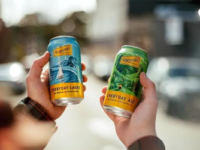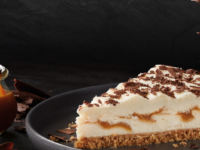In the face of a mounting cost-of-living crisis, consumer spending is changing rapidly. According to data from the Australian Bureau of Statistics, spending has largely shifted toward supermarkets, restaurants and cafes, with all other forms of discretionary spending falling year-on-year in June. Australian Retailers Association CEO Paul Zahra noted that the increase in food spending was being driven by “unavoidable price increases”, and noted that, in reality, all retailers are now fa
Unlock indepth features,executive
interviews and quarterly magazines
In the face of a mounting cost-of-living crisis, consumer spending is changing rapidly. According to data from the Australian Bureau of Statistics, spending has largely shifted toward supermarkets, restaurants and cafes, with all other forms of discretionary spending falling year-on-year in June. Australian Retailers Association CEO Paul Zahra noted that the increase in food spending was being driven by “unavoidable price increases”, and noted that, in reality, all retailers are now facing a “discretionary spending slowdown”. Though more money is being spent in supermarkets, it isn’t necessarily being spent on the same products as in the past. Woolworths and Coles have both noted that customers are moving away from name-brand products to purchase cheaper alternatives, such as their own private-label products. Such a shift is likely rationalised by customers as a temporary change, according to Lyndall Spooner of market research firm Fifth Dimension, but data shows that many customers are likely to stick with cheaper brands long-term. According to Fifth Dimension’s research, consumers make the vast majority of their purchasing decisions – as much as 90 per cent – unconsciously, Spooner told Inside FMCG. But widespread price hikes have seen shoppers making more conscious choices at the till.And, if these cheaper products prove to be as effective as more expensive alternatives, consumers will have little reason to switch back. What customers really wantThough many surveys have found that customers want brands to be more sustainable and ethical, and would be willing to spend more money on such products, actual spending patterns do not necessarily support these claims. Fifth Dimension regularly analyses spending data, such as credit card transactions, and conducts surveys with customers around what they buy and what they think of brands. It found that customer loyalty and spending are mostly driven by the ability of a brand or product to deliver what it promises. Eco-credentials can be important as well, but only if they exist alongside strong performance. “The reality is that people buy from the brands that best meet their needs, and are the best product or services for what they want,” Spooner said. “When everything else is equal, customers will go for the brand with a better character, but most people would trade off going for a company they think is doing better for the environment in order to get something that is better for them personally.”Once customers find a brand that serves them, they’re unlikely to change to a different brand until they’re forced to. In other words, their shopping behaviour becomes unconscious. With the heightened cost of goods, however, many people have been exploring their options.“The problem is that [brands have] now triggered someone into trialling new products that they probably wouldn’t have tried otherwise, and some of these products might be pretty good,” Spooner explained. “And if they realise that this cheaper brand matches their needs on the product capability side, chances are that they’ll stick with it.”It can be difficult for brands to know how to respond to customers drifting away, not because of a lack of loyalty, but rather because they don’t offer attractive value in the current market.“Do they give up some margin and drop the price? Or do they come out with some alternative, or a bigger value bundle to stop people from trying other products?” Spooner said. “The reality is that there are a lot of really good products on the market, but we often don’t trial them all because we can’t be bothered.”A good example of a brand that has capitalised on the current disruption in consumer behaviour, Spooner said, is the cosmetics brand Il Makiage.During the pandemic, the brand flooded social media with videos of women trialling its foundation and pointing to an online survey that would allow customers to find their perfect shade match. It was an easy process and promised quality products for cheaper prices. Coming out of the Covid-19 lockdowns, customers were ready for something new, and many took the survey, purchased the foundation, and gave up prestige brands such as Dior and Chanel.“It’s not that these people didn’t like luxury products, or that they planned to give them up, they were just trialling something new and found more value,” Spooner said.“So you can be really clever today, but the ultimate thing is that you have to have a product with really strong capabilities. That’s what will drive loyalty. And then if you want passion, you’ve got to have the right positioning as a brand. Together, that’s an unassailable position.”














